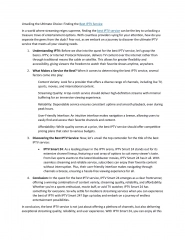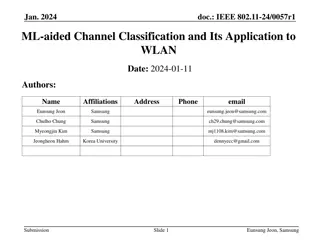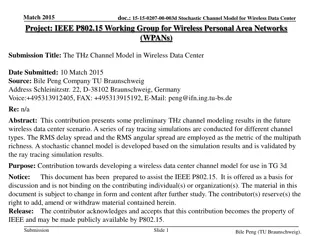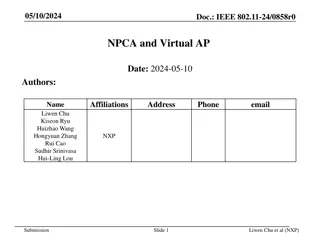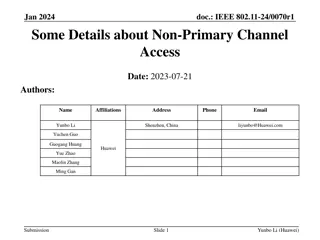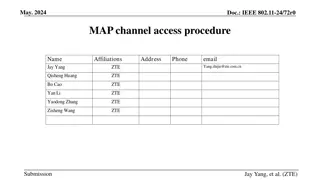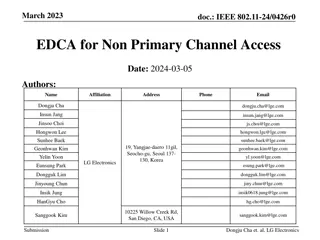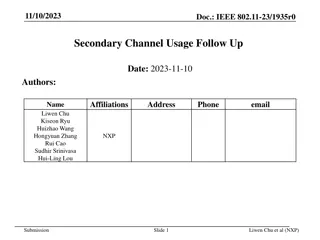Channel Popularity Dynamics in IPTV Systems
Explore the dynamics of channel popularity in large commercial IPTV systems, focusing on distribution, stability, and modeling. The study reveals skewed popularity distributions and strong correlations between channel accesses and dwell time. Gain insights into user behaviors and system performance within the IPTV framework.
Download Presentation

Please find below an Image/Link to download the presentation.
The content on the website is provided AS IS for your information and personal use only. It may not be sold, licensed, or shared on other websites without obtaining consent from the author.If you encounter any issues during the download, it is possible that the publisher has removed the file from their server.
You are allowed to download the files provided on this website for personal or commercial use, subject to the condition that they are used lawfully. All files are the property of their respective owners.
The content on the website is provided AS IS for your information and personal use only. It may not be sold, licensed, or shared on other websites without obtaining consent from the author.
E N D
Presentation Transcript
Modeling Channel Popularity Dynamics in a Large IPTV System Tongqing Qiu, Jun (Jim) Xu (Georgia Tech) Zihui Ge, Seungjoon Lee, Jia Wang, Qi Zhao (AT&T Lab Research) Sigmetrics 2009 1 10/10/2024
Motivation IPTV emerges a new distribution framework for TV Increasing widely deployed Not well studied Compared to conventional broadcast TV, commercial IPTV uses unicast/multicast instead Channel popularity matters to system/network performance Channel popularity distribution in a IPTV system How skewed? How stable? Stationary or any periodic patterns? How to Model? 2 10/10/2024
Roadmap IPTV architecture overview & data collection Empirical measurement results of channel popularity Modeling channel popularity Multi-class population study Conclusion 3 10/10/2024
IPTV Architecture Overview Note: we focus on large commercial IPTV system, rather than P2P based IPTV systems. IP multicast Unicast Due to the latency of channel switching 4 10/10/2024
Data Set A large-scale IPTV service provider in North America ~2,000,000 Set Top Boxes (STBs) ~500 channels One month data (June) in 2008 Four time zones, we present the results in EDT We construct user activities with respect to: Turning on/off STBs Switching channels Limitation Short channel switching not recorded 5 10/10/2024
Two Metrics Channel access frequency The number channel switching events to the channel Channel dwell time The amount of time STBs stay tuned in the channel Note: normalized among all channels The number of online STBs change overtime 6 10/10/2024
How Skewed -- Distribution of Channel Popularity High skewness the top 10% of channels account for 90% of channel access Similar observation in other context, e.g. VoD, Youtube 7 10/10/2024
Strong Correlation between Channel Accesses and Channel Dwell Time Reason 1: Limitation of our data. Reason II: People are more likely to switch directly to the channel that they intend to watch. Possible reasons: relatively long delay during channel switches and the convenient TV guide. 8 10/10/2024
How Stable -- Time Series Analysis Time series The probability to select one channel Stationary analysis Methodology The nonparametric runs test Results At the 95-th percentile confidence interval, 92% of the channels pass the test (stationary process) The exceptions indicate the nontrivial pattern (diurnal patterns) Coefficient of variation (CoV) 0.60 for all channels (standard deviation = 0.013) 9 10/10/2024
Time Series Analysis (cont.) Autocorrelation Diurnal patterns Weekly patterns? Exponential decreasing (a typical behavior in auto-regression processes) 10 10/10/2024
Multi-scale Property of Channel Popularity Similarity Prediction Similarity between current time interval (minutes, days, etc.) to the next one Cosine similarity Determined by the TV program (shows) of the time. Determined by the overall type of TV program on the channels. Weakest predict arability of 3 ~ 4 hours window 11 10/10/2024
Modeling Channel Popularity Distribution Recall observation: Highly skewed Zipf-like model Success in Web, VoD, etc. An object of the rank i has the access probability Top 100 accounts for over 95% of channel access 12 10/10/2024
Modeling Popularity Dynamics Recall dynamics observation Almost stationary Autocorrelation: exponential decay Mean reversion model Match the observations Fluctuate but will revert to long-term equilibrium level Mean reversion rate Long-term mean Volatility 13 10/10/2024
Modeling Popularity Dynamics (cont.) Parameters estimation Derived from Zipf Autocorrelation fitting Derived form CoV 14 10/10/2024
Modeling Dynamics -- Validation Cosine similarity ( V shape) 15 10/10/2024
Modeling Dynamics Validation (cont.) Missing diurnal patterns 16 10/10/2024
Multi-class Population Model Previous model fails to capture diurnal pattern Users regularly change interest during time of day? Users with different interest tend to watch TV at different time of day? Basic idea: subgroups (multi-class population) How to classify the users? How to select desired grouping method? Explain diurnal patterns Integrated to our model How to use multi-class population to extend the model? 17 10/10/2024
Desired Group Method WT-D (daily watching time) Heavy-watchers (>12 hours) light-watchers (<2 hours) and medium-watchers Distinct channel preference between sub-groups User-to-group affiliation stable over time. 18 10/10/2024
WT-D Can Explain Dynamics 19 10/10/2024
WD-T can Extend the Model Multi-class population model Derive the popularity of ith channel based on ith channel, jth subgroup 20 10/10/2024
Conclusion Measure and model channel popularity Model popularity distribution and dynamics Zipf-like Mean reversion process Multi-class study Develop a method for identifying groups of users Combine this grouping and the change of population mix to obtain a multi-class population model. 21 10/10/2024
Thank you! Questions? 22 10/10/2024
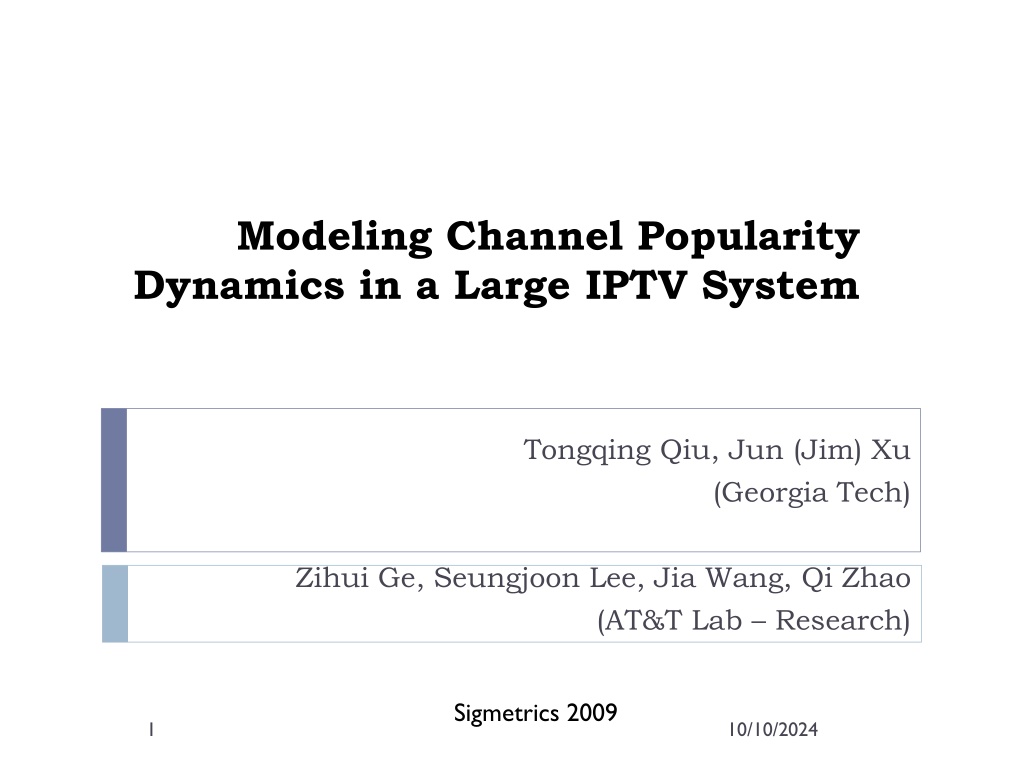
 undefined
undefined











